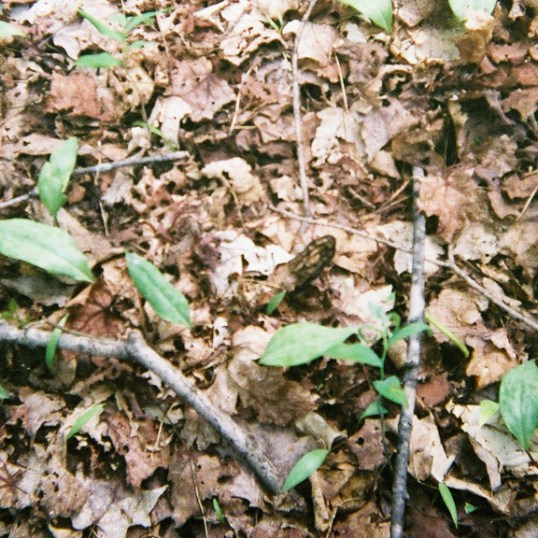I was thinking back fondly on a strange incident at Tin Bridge on the Pigeon River in the Pigeon River State Game Area. I had parked my 10 year old 91 Pathfinder at the bridge and fished a stretch upstream and when I returned to my vehicle I had to drive over the bridge, turnaround, and re-cross the bridge to head back to camp. At that time the bridge was in pretty rough shape with squared off logs laid sideways and apparently not firmly attached. You could hear a distinct thumping sound as you crossed but what was really happening down there was not clear. As I re-crossed the bridge the dull thump sound was replaced by my blasting exhaust. A log had somehow knocked my muffler off – but that was small potatoes. When I put on the brakes my foot went to the floor. I rolled to a stop and looked underneath. I could see a severed brake line with dripping fluid and the muffler hanging low. There was nothing I could do but glide back to camp. Fortunately it was all two-tracks and I didn’t meet anyone head-on.
Back at camp my buddies took turns surveying the underside and that’s where we first noticed the frame damage. The rear axle on a 91 Pathfinder has support members designed for stabilizing. One was definitely broken. The frame was fairly rusted out anyway so it was hard to gauge how much I can blame on the bridge. Still, this was serious. The frame needed work.
I started adding up the costs. We were out in the sticks and the closest town with any auto service was Gaylord, at least twenty miles away. It would be expensive to have the vehicle towed. The exhaust and brake line might run a couple hundred bucks. The frame was the wild card – I didn’t know if I could even get the frame fixed, or for what cost.
I fired up the Pathfinder the next morning and found that a car without exhaust is twice as noisy on a cold morning. Feral followed me in, wisely, since he didn’t want to provide brakes with the rear of his vehicle. We took the old highway into Gaylord to avoid traffic. I used my parking brake lever to help stop – I can’t remember if I had a hint of brake left – that may have been the case. I think we pinched the severed line so the brake system held some pressure.
I rolled into a muffler shop near Main Street and they put it on the hoist. They did right by me – putting on a cheap muffler and fixing the brake line. They also directed me to a place that might be able to fix the frame, a welding shop of some kind. As I recall, they were closed. It was Saturday.
Meanwhile I had to formulate a back-up plan: just in case. I could scrap the vehicle or try to trade it in for something else providing a dealer would even take it. We did a little car browsing and I was feeling the pressure. I really needed the frame fixed in order to avoid a “make-do” car buying experience. Being at the mercy of a car salesman is low on my list of entertainment. I looked at a few older vehicles but didn’t see anything I would even want to consider.
On Monday Feral and I stopped at the suggested welding shop and explained the situation. The young fellow working there (alone) crawled under the Pathfinder and banged on the remaining rusted frame to see what he could find to work with. He offered to weld some new pieces of steel onto the frame for $200. I jumped at it. He told us to come back at the end of the day. When we arrived later I could tell he spent more time than he planned but he was very professional about it. I looked underneath and could see he’d welded some new steel in place and listened as he explained the difficulty of making sure everything was aligned properly. By all accounts I had lucked on a perfectionist who took pride in his work. Bottom line: I was back in business for about $350 total car repair.
If nothing else, this is a true story about nice people in a small town helping out a guy with car problems. It could have been a disaster. I should mention the state has replaced the old bridge. The new one is an eye sore with heavy duty guard rails that belong on an expressway – not exactly what you want to see on a two-track out in God’s country… but I really shouldn’t complain. If anyone has a photo of the old bridge please send it to me and I’ll add it to this post. Thanks.













